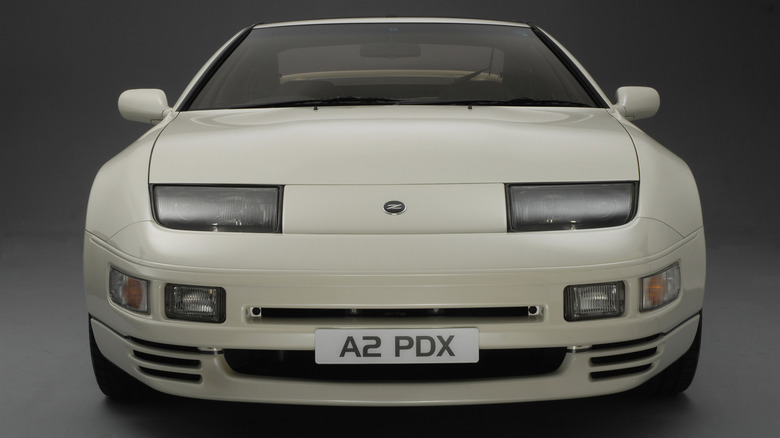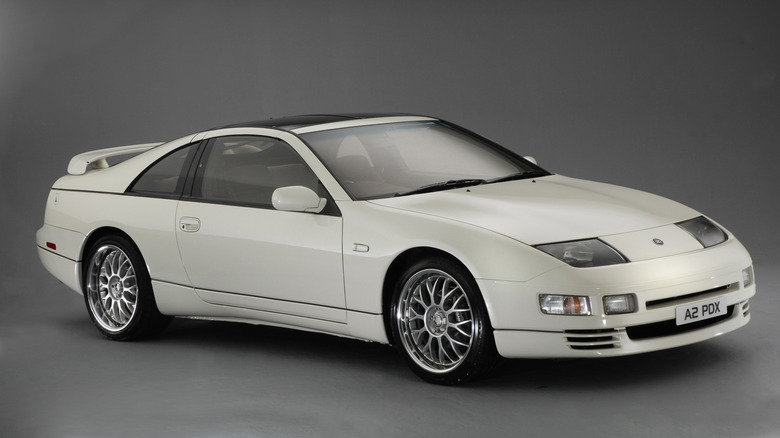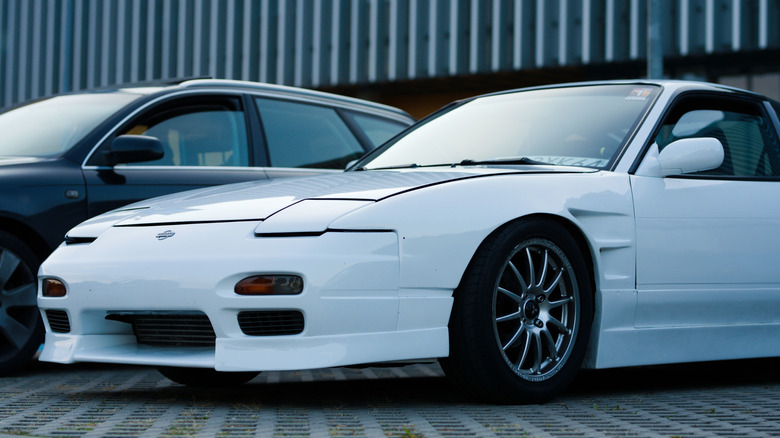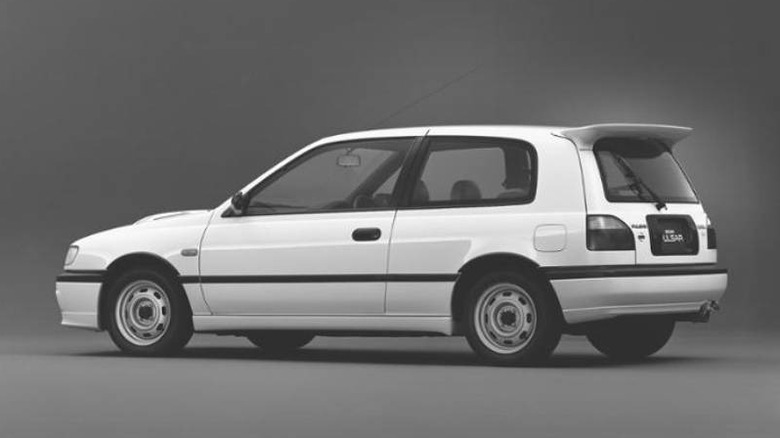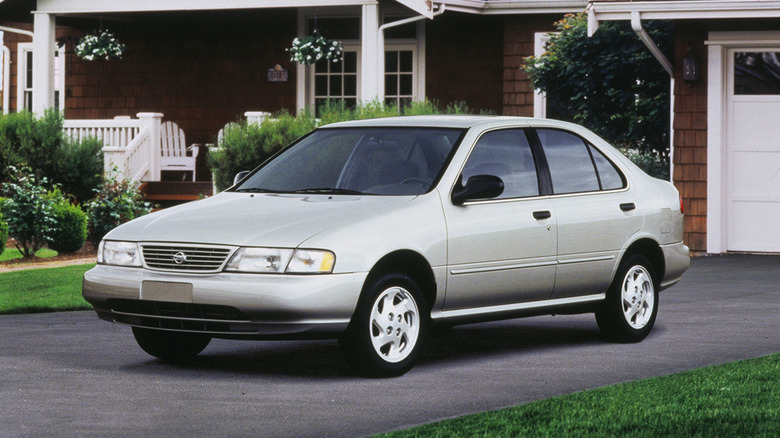5 Iconic Nissan Cars From The '90s
Nissan has long been a household name, known for popular models like the Pathfinder SUV, the reliable Altima sedan, and the all-electric Leaf. But beneath the surface, the brand carries a legacy filled with some of the most important cars ever built — including groundbreaking sports cars, a few strange and quirky models, high-performance GTs, and futuristic EV concepts and prototypes.
The 1990s were a golden era for Nissan's performance lineup. This was the time when the brand wasn't all about playing it safe with family sedans and full-size SUVs. Instead, the brand was pushing boundaries, creating some of the most exciting and beloved sports cars of the decade. Nissan offered a mix of speed, innovation, and style, with some vehicles coming as turbocharged beasts and others as finely tuned coupes.
However, passion projects don't always pay the bills. While enthusiasts were spoiled for choice, the market for these iconic cars shrank, forcing Nissan to pull the plug on their beloved vehicles like the GTP ZX-Turbo and the Pulsar GTI-R. Some of these iconic '90s vehicles have evolved into modern-day successors, integrating with new tech features and awesome engines. Still, the '90s remain an unforgettable chapter in the brand's history — a decade filled with legendary vehicles that still capture hearts.
Nissan Skyline GT-R R34
Only a few cars embody 1990s Japanese performance quite like the Nissan Skyline GT-R R34 did. Building on the legacy of the R33, which accomplished a record time, under eight seconds, at the Nürburgring Time Attack in Nürburgring, Germany, the R34 was introduced to the market in 1998 as a more refined model in every aspect of performance. This improved GT-R model had the same RB26DETT 2.6L twin-turbo inline-six offered in the R32 and the R33 and was one of the best engines ever placed in a Skyline. This engine kicked out 276 horsepower and 289 Ib-ft of torque, although it's widely believed the exact numbers were higher due to Japan's gentlemen's agreement on horsepower limits.
The R34 featured an advanced ATTESA E-TS Pro all-wheel-drive system — an upgrade from the mainstream AWD on previous models — and an active rear differential, which improved its handling and grip. But besides the enhanced performance and handling, the R34 also capitalized on technology. It came with a multi-function display (MFD) — the first for production cars at the time — on the dashboard, which provided real-time performance data. Nissan also made the R34 a sharper and more aggressive aerodynamic design, which aided in downforce and high-speed handling.
A cultural icon and an unstoppable force in motorsports, the R34 went on to cement its status through video games and films, becoming one of the flashiest cars in "The Fast and the Furious" franchise. From 1999, Nissan produced 11,578 units of the GT-R R34, until it was discontinued in 2002, but its reputation only grew stronger.
Nissan 300ZX
The Nissan 300ZX was a game-changer for the Z-car lineage. Produced across two generations — the Z31 (1983–1989) and the Z32 (1989–2000) — the ZX elevated the brand's reputation in the sports car market. Unlike its predecessor, the first-generation Fairlady Z, the 300ZX refocused on driving excitement, performance, and aerodynamics while maintaining everyday usability. Released in coupe, targa, and convertible body styles, the 300ZX became a hit, especially in the United States.
A key shift in the 300ZX was its transition from an inline-six to a V6 powerplant, which marked the debut of Nissan's VG-series engines. The base Z31 version came with a naturally aspirated 3.0L V6 producing up to 170 horsepower and 174 lb-ft of torque, while its turbocharged variant delivered 228 horsepower and 246 lb-ft of twist. The Z32 generation was introduced in 1990 with a 222-hp naturally aspirated 3.0L DOHC V6 and an optional 300-hp twin-turbocharged version. Nissan later released a limited-edition Steve Millen-tuned SMZ 300ZX, which pushed output to 365 horsepower, making it a serious force on the streets.
Beyond its road presence, the 300ZX carved a name for itself in motorsports. It dominated the IMSA GTO category and claimed victories at the 24 Hours of Daytona and the IMSA GTS class at Le Mans
Nissan 240SX
The Nissan 240SX was one of the most well-balanced and driver-focused sports coupes of the 1990s. Introduced in 1989 as part of the S13 generation, it featured a lightweight two-door chassis and an independent suspension system. Unlike its JDM counterpart, the turbocharged 180SX, the North American 240SX versions came with a naturally aspirated KA24E, a 2.4L single-overhead-cam inline-four that produced 140 horsepower. However, a facelift in 1991 brought a more rounded front fascia and a new DOHC KA24DE engine, which made 155 horsepower.
While the 240SX lacked the turbocharged power of its Japanese sibling, the balanced chassis and suspension system made it an absolute joy to drive. Eventually, the aftermarket embraced the 240SX. Owners could swap in the coveted SR20DET engine from the JDM Silvia —which kicked out 247 bhp and 220 lb-ft of torque — for an easy performance boost. Additionally, the 240SX was lightweight with a rear-wheel-drive layout and a manual transmission — the recipe for a drift car. This reputation only grew with the rise of professional drift racing. Despite its relatively modest power figures, the 240SX was a legend in the tuner and motorsport communities.
Nissan Pulsar GTI-R
The Nissan Pulsar was a pocket rocket built with one purpose — to dominate the Group A World Rally Championship. Shortly after its release, this all-wheel-drive hot hatch earned the nickname "Baby Godzilla", thanks to its performance, which was heavily inspired by the Skyline GT-R. From 1990 to 1994, Nissan produced 13,842 units of the Pulsar GTI-R, 5,000 of which were produced within the first year. Powering this hatch was a 2.0L turbocharged SR20DET engine that pushed 227 horsepower (230 PS) to the wheels via an advanced AWD system. The GTI-R could accelerate from 0-62 mph in just 5.4 seconds — an incredible feat at a time when most family cars took twice as long.
Unlike its rally-bred rivals, the Subaru WRX and Mitsubishi Lancer Evo, the Pulsar GTI-R arrived ahead of its time, packing a serious performance into a compact hatchback. And despite its hatchback style, the GTP-R has an aggressive styling. It featured a massive rear spoiler and a distinctive bonnet-mounted air intake that funneled air directly to the intercooler. Build to race, the Pulsar came with a rally-tuned chassis and suspension, which made it easy to drive on tight, winding roads. Most importantly, the combination of high-powered engine, low weight, and AWD traction allowed the Nissan Pulsar GTI-R to outperform many pricier sports cars of its era.
Nissan Sentra SE-R (B13)
The Nissan Sentra SE-R was Nissan's way of proving that budget-friendly compact cars didn't have to be boring. Produced from 1991 to 1994, the B13 was a seemingly unassuming economy car that packed a serious performance punch. At the heart of its performance was a naturally aspirated 2.0L DOHC SR20DE inline-four engine that churned out 140 horsepower. This engine revved to an impressive 7,500 RPM and allowed the SE-R to sprint from 0 to 60 mph in 7.4 seconds. Unlike modern turbocharged compacts, the SE-R had no turbo lag. This meant that drivers had instant throttle response and a powerband that begged to be pushed.
Adding to its performance credibility was a factory limited-slip differential (LSD), which was a rarity in affordable front-wheel-drive cars of the era. This gave the Sentra SE-R improved traction and cornering. Despite its modest appearance, the SE-R went head-to-head with rivals like the Honda Civic Si and Volkswagen GTI. Car and Driver even ranked it among the best cars of the decade. But, beyond its driving dynamics, the SE-R gained a loyal following due to its reliability and easy maintenance. Originally made for the European market, the SR20DE was built to withstand high-speed autobahn cruising, which made it durable and highly tunable. Even today, the Sentra SE-R has good aftermarket support, which means it can be modified and maintained affordably.
